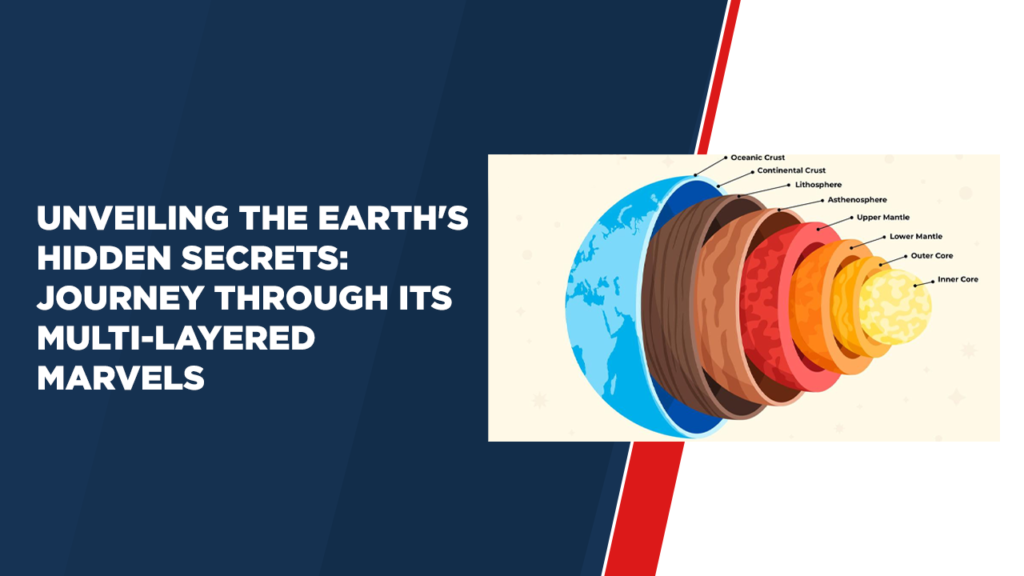Unveiling the Earth’s Hidden Secrets: Journey through its Multi-layered Marvels
Introduction
Earth, our home, is a fascinating and complex planet made up of different layers, each of which has different properties and characteristics. These layers play an important role in shaping the geological processes of the planet, from earthquakes to volcanic eruptions. In this article, we will delve deeper into the layers of the Earth, reveal their secrets and understand their importance.
How Many Layers of the Earth Are There?
The Earth is made up of four main layers: the crust, the mantle, the outer core, and the inner core. These layers are differentiated on the basis of their physical and chemical properties, temperature and state of matter. To better visualize these layers, see Layers of the Earth diagram.
The Crust: The Earth’s Thin Skin
The outermost layer of the Earth is known as the Earth’s crust. It is the thinnest layer of the Earth, accounting for only a small part of the total volume of the planet. The crust is divided into two types: continental crust and oceanic crust. Continental crust is thicker and less dense than oceanic crust, which is mainly composed of granitic rocks. On the other hand, oceanic crust mainly consists of basalt rocks and is relatively thin.
The Mantle: A Viscous Layer of Convective Flow
Beneath the crust lies the mantle, a layer that extends to a depth of about 2,900 km. The mantle is responsible for the movement of tectonic plates and is characterized by its semi-solid, plastic-like behavior. This layer experiences convection currents, which contribute to the movement of Earth’s lithospheric plates and drive geological events such as earthquakes and volcanic activity.
The Outer Core: Where Liquid Iron Flows
Beneath the mantle is the outer core, which extends from about 2,900 to 5,150 kilometers below the Earth’s surface. The outer core is a liquid layer composed mainly of iron and nickel. It plays an important role in generating the Earth’s magnetic field through the process of convection and movement of molten metals.
The Inner Core: A Sphere of Solid Iron
At the very center of the Earth lies the inner core, which extends from a depth of 5,150 kilometers to the Earth’s center, at a depth of approximately 6,371 kilometers. Despite extreme pressure, the inner core remains solid due to the high temperatures and the presence of iron and nickel in the crystalline state.
Conclusion
Understanding the Earth’s layers is essential to understanding the dynamic geological processes that shape our planet. From the thinnest outer layer to the innermost core, each layer contributes to Earth’s unique characteristics. Earth’s water-holding layer, found primarily in the mantle, influences various phenomena such as volcanic eruptions and the movement of tectonic plates. As we continue to explore and study the layers of our planet, we gain insight into the complex interplay of forces that have shaped the Earth over millions of years.



